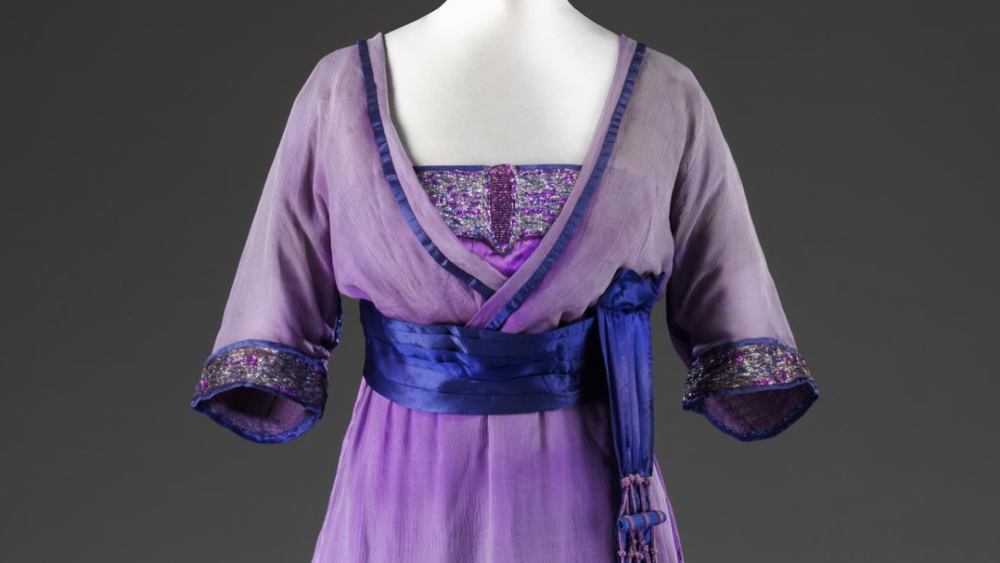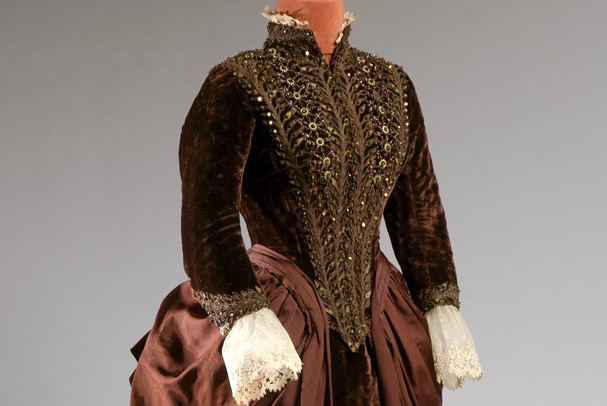Rate the Dress: Purple personalities
Update: Voting closed After our discussions about makers & wearers with the last few dresses, I thought it might be interesting to see a dress where we know the wearer, and the designer, as well as a great deal about the actual makers of the dress. Last Week: an 1880s velvet and satin frock The brown velvet and satin dress was a smash hit, with a well-deserved round of applause for the maker. It lost a point here and there because of the bustle or the colour (and a couple of points for something that I think was a misunderstanding in construction 🙁 ), but overall you deemed it practically perfect in every way. The Total: 9.7 out of 10 Fully three-quarters of the ratings for last week’s dress were perfect 10s! This week: a 1912 evening dress by Lucile I thought we needed a pop of colour after a few weeks of predominantly dark or white dresses, and this Lucile gown fit the bill perfectly, while also being a great example of a gown …



